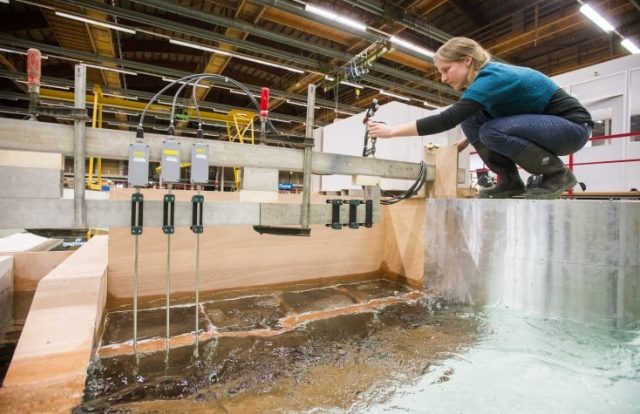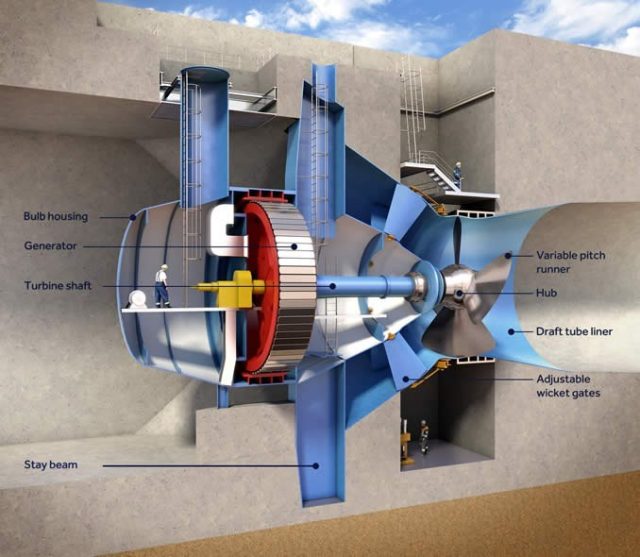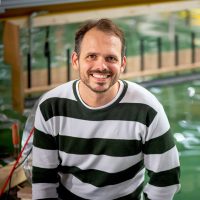Swansea Bay: Testing the world's largest tidal lagoon in Delft
Deltares is using a scale model to test the design of a new tidal power plant in Swansea Bay, which is located on the Bristol Channel. The replica of the tidal lagoon has been built in the Facilities Hall in Delft. Researchers are looking at how they can prevent unnecessary energy losses as water flows in and out, the aim being to make the plant as efficient as possible. Dedicated flow models are being used. Deltares is the only place in the world with validated computer models that can be used to assess designs of this kind.


The knowledge generated can also be used for other projects involving tidal lagoons such as the Energising Deltas.
Unique conditions in Swansea Bay
Swansea Bay is one of the few places in the world where the difference between high and low tide is so extreme. The tidal range of eight to ten metres makes the bay an ideal location for a tidal lagoon. The plan involves building a breakwater in the bay that will be about fifty to one hundred metres wide and almost ten kilometres long.
The breakwater does not seal off the bay completely; it creates a lagoon in one part of the bay, minimising the impact on the existing infrastructure, ecosystem and surroundings as much as possible. There will be sixteen turbines, which can supply 320 MW, making this the world's largest tidal lagoon.
Renewable energy for 155,000 households
The lagoon will deliver sustainable energy to 155,000 households. It will also boost socio-economic development in Swansea: employment and tourism, for example, will benefit.


